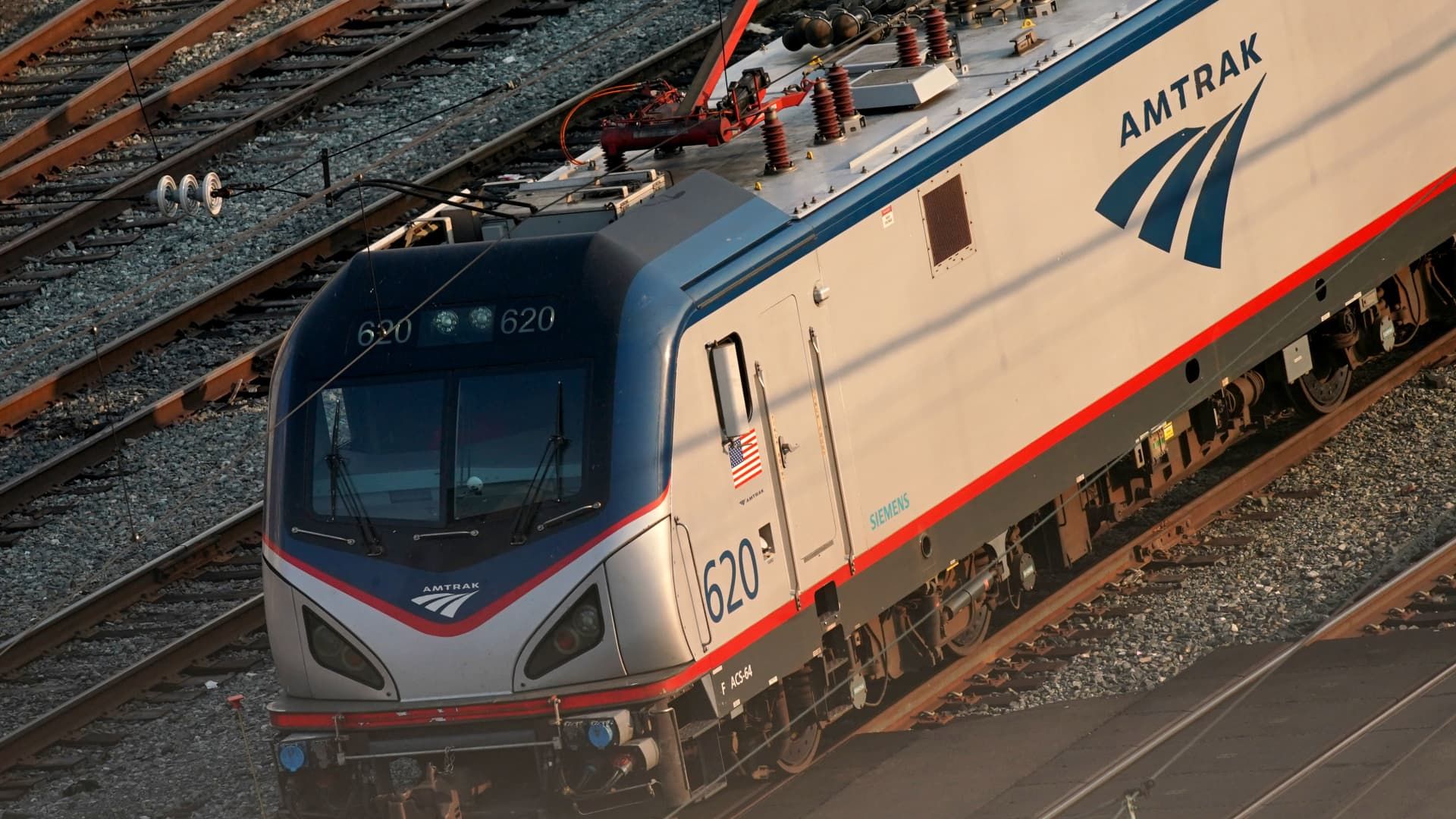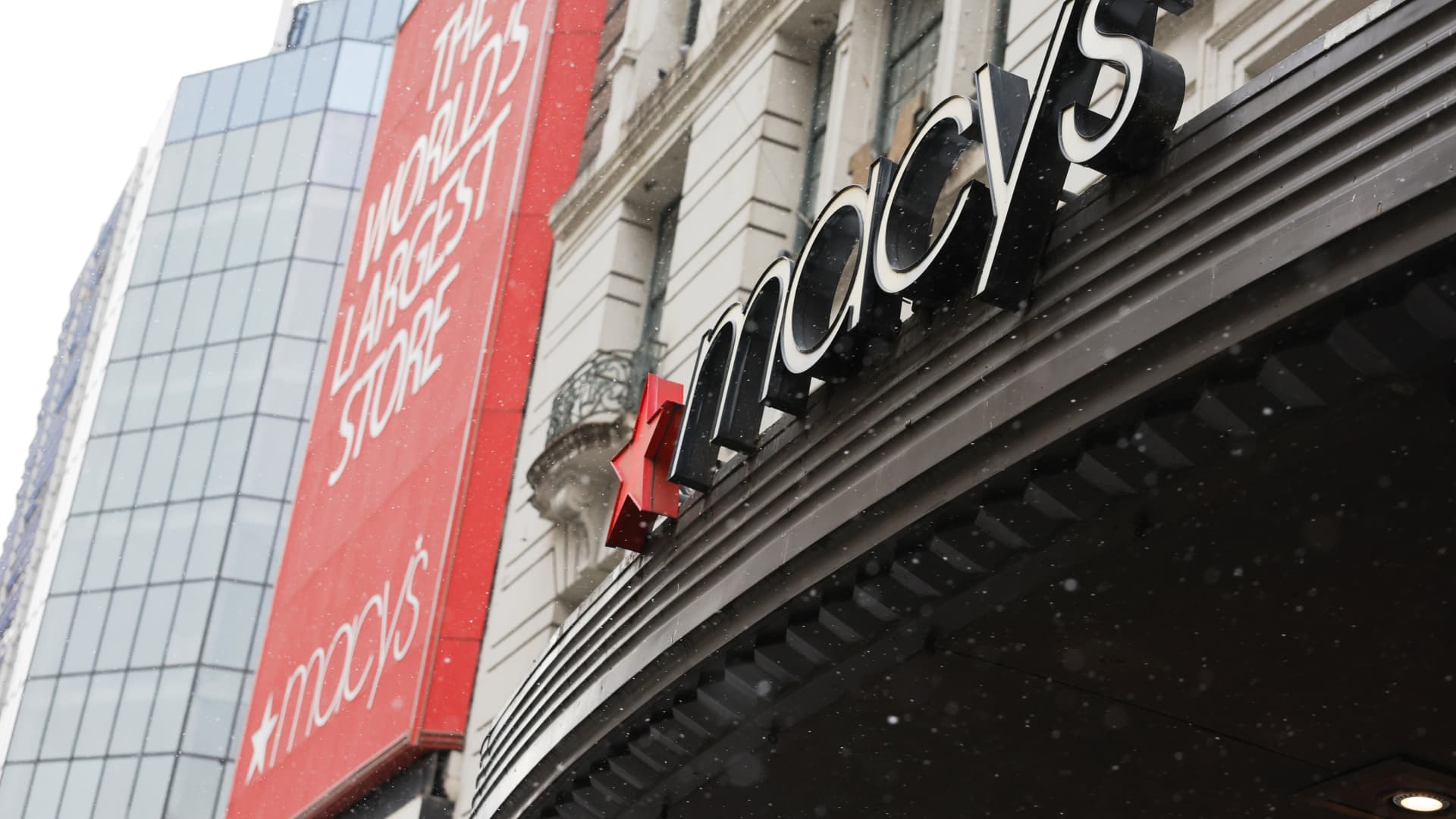Amtrak trains travel through Washington, DC, on September 15, 2022.
Stefani Reynolds | AFP | fake images
As domestic travel recovers from pandemic lows and prices soar, some travelers are opting for trains over planes.
For many, the trade-offs are simple: trains are often cheaper, offer more legroom and are better for the environment than air travel. Those perks and others are driving passengers to Amtrak, the government-backed U.S. rail service, as it tries to revive pre-Covid ridership and smooth operations.
Since emerging from the pandemic, airline ticket prices have skyrocketed as travel demand has increased. On top of that, uncertainty in the airline industry has soared in part due to high-profile incidents, such as one that made headlines earlier this year when a section of an Alaska Airlines plane exploded mid-flight, leading to to the discovery of loose hardware. on Boeing 737 Max 9 aircraft in multiple airline fleets.
Although train routes typically take longer than flight times, total travel times generally equalize when you factor in airport traffic, time spent in security lines, and boarding wait times. according to Clint Henderson, managing editor of the travel site The Points. Boy.
“We've done speed tests and measured the amount of time it takes to go between cities like New York and DC by train versus by plane, and although the flight is very short, it generally takes about the same amount of time,” he said.
Trains will likely never make flights obsolete, but Henderson said he has seen a broader increase across the travel industry in the number of people choosing to take Amtrak trains instead of flights, especially in the Northeast Corridor. , where flying between two nearby cities does not. It doesn't always make sense.
One of those passengers is Leonor Grave, who lives in New York City and often travels to her home in Washington, D.C., on Amtrak trains instead of flying. Grave said she especially likes that train stations are usually in the center of cities, unlike airports, which are usually on the outskirts of cities.
“If trains were faster and went to more destinations, I don't think I would ever fly domestically,” Grave said. “It's such a fluid way to travel… and I find it much more enjoyable on the train: you can get up, walk around, stretch your legs, you can go to the food car. You feel much more grounded.” .
Grave said he was even able to get his bike on the train and arrive at New York's Penn Station just 20 minutes before the train left, instead of having to arrive at the airport two hours early. While he has experienced some delays on Amtrak trains, especially after the pandemic, he said they have been insignificant compared to the flight delays and cancellations that have recently plagued the air travel industry.
“I don't glorify Amtrak as a corporation; there is a lot they could do to improve their services,” Grave said. “Although Amtrak is not perfect, I think it is the best option we have. The more competitive rail becomes with air and the more people take the train, the more we can develop these rail routes and connect different places throughout the world. rest of the country. It's an exciting future for train travel.
Reasons for the railway
American trains are still far from the high-speed rail networks of Europe or Japan, for example. (Although Amtrak's Acela trains can reach 150 miles per hour on sections of their route.)
However, the option is increasingly attractive to some travelers as travel dynamics change.
Twenty-two-year-old Chiara Dorsi booked a 19-hour Amtrak ride from Chicago to New Orleans this month instead of taking a flight. The train ticket saves you the hassle of dealing with baggage limits and going through security. She also saved him almost $400 and allows him to work during the trip.
“The price was just astronomically different,” he said. “And I'm working remotely and Amtrak has Wi-Fi, so the time I waste on the train is not a waste because I can do my work from anywhere.”
Dorsi also said he tends to gravitate toward trains for their environmental benefits.
According to the International Air Transport Association, air travel accounts for about 2% of the world's global carbon emissions. That travel impact is significantly smaller when substituted for train travel, according to Aaron McCall, federal advocacy coordinator for California Environmental Voters.
As long as there is community travel, emissions are sure to be reduced, McCall said.
“We are seeing a decrease in greenhouse gas emissions across the board, and the reason we are seeing that decrease is directly related to investment in green technology and public transportation,” he said.
McCall said he has recently seen more people taking Amtrak trains in California, where public transportation lags significantly behind the robust East Coast networks.
The number of passengers returns, with delays
Amtrak reported total ridership of more than 28 million in 2023, a 24% increase from the previous year but still significantly below the pre-pandemic total of more than 32 million passengers in 2019.
According to a November report, it saw a particular recovery in ridership and revenue along the Northeast Corridor, which spans from Washington, D.C. to Boston, with an increase of more than 22% year over year.
But train punctuality has been affected since the pandemic, according to a 2022 report from the Bureau of Transportation Statistics. In 2019, Amtrak operations had an overall on-time performance of 75%, on a weighted basis, according to BTS. In 2020 and 2021, as passenger numbers plummeted, punctuality improved to 80% and 78%, respectively.
As of 2022, the latest data included in the report, total delays increased again and on-time performance fell to 74%, according to the report. Much of those disruptions were the result of problems with host railroads, rather than Amtrak's fault, but the company said it remains committed to finding ways to lessen disruptions.
“Across Amtrak's nationwide network, we work around the clock to ensure reliable and safe service during inclement weather,” Amtrak told CNBC. “We have our own equipment that monitors weather conditions and evaluates the status of the railway and related infrastructure in real time.”
Amtrak has also been building its longer routes, boosted by new funding from the White House to improve trains and build more infrastructure between cities. In an effort to double ridership by 2040, the company is investing more than $5 million in a program aimed at improving train stations, tunnels and bridges.
Those upgrades will be the key “game changer” to revolutionizing train travel, according to The Points Guy's Henderson, even if the timeline seems long.
“They're reinforcing the tracks in some places, rebuilding bridges and these trains will be able to run faster,” Henderson said. “Once they start rolling out, it's going to be exciting… I just urge people to be patient because it's going to be a while before these things become a full reality.”








